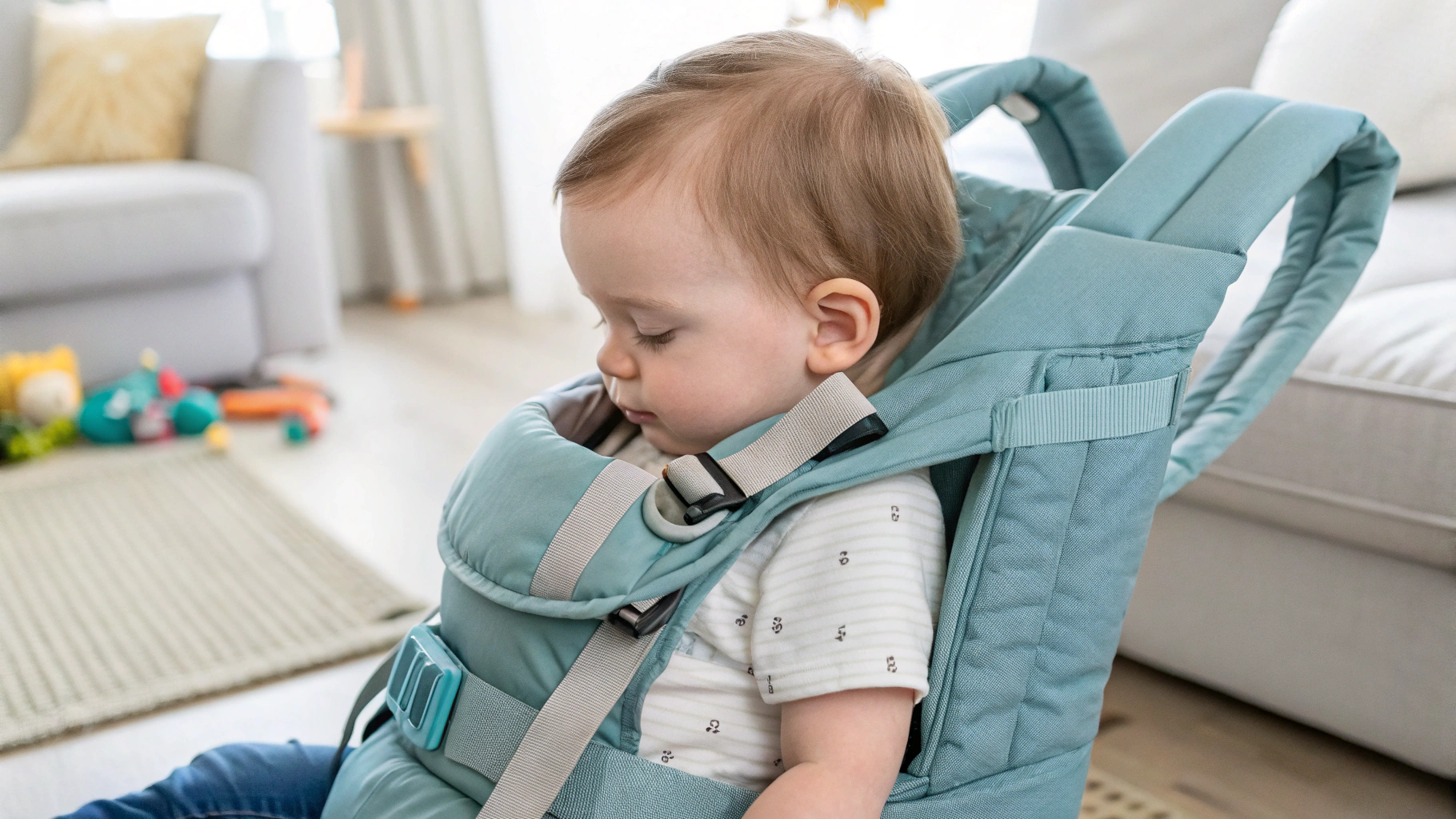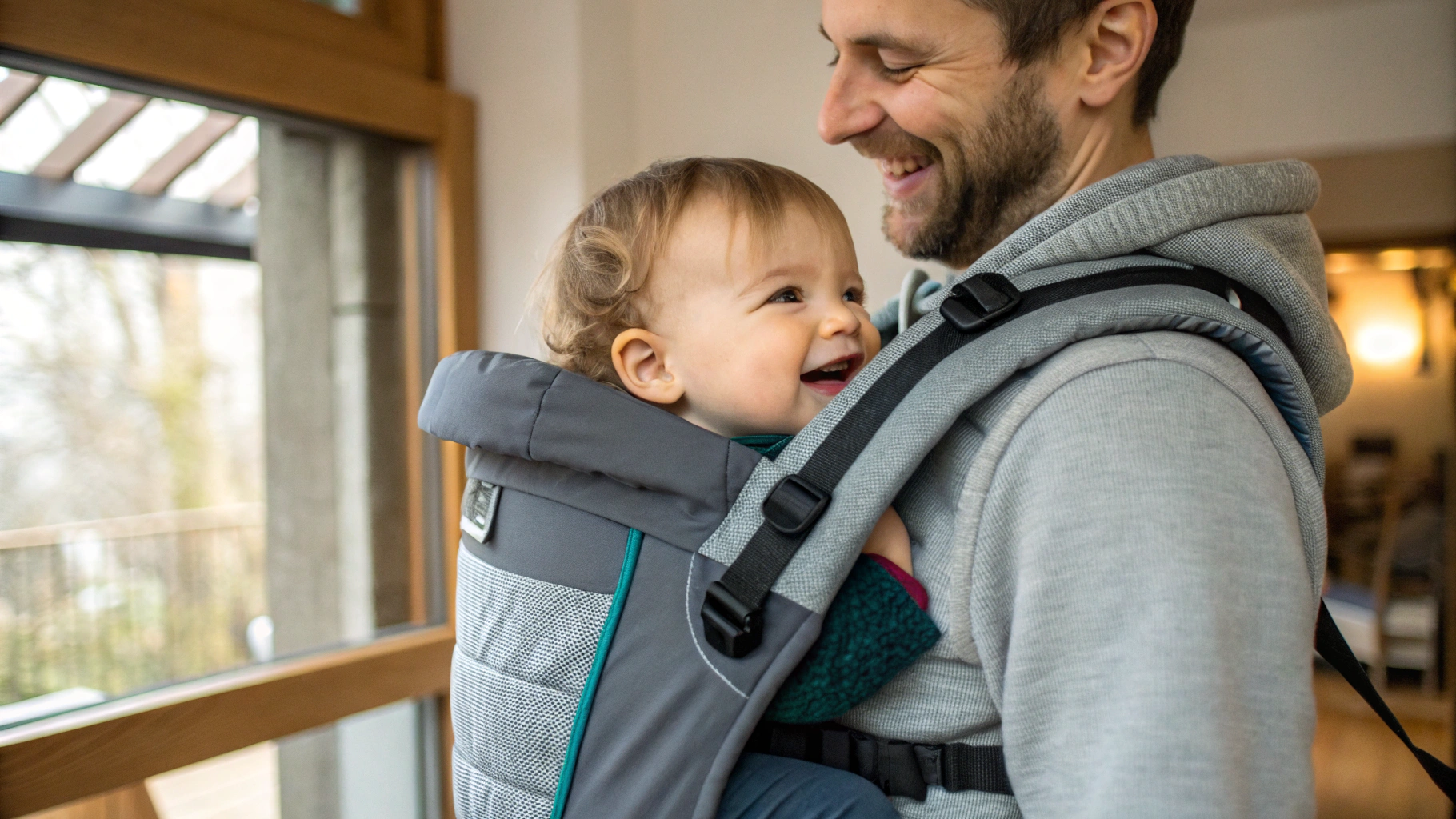Table of Contents
I still remember the first time I tried hauling my wiggly, 2-year-old around in what I thought was a practical carrier. Let’s just say… it lasted about twenty minutes before my back screamed for mercy, and my toddler staged a jailbreak. That day, I realized that not all carriers are created equal—especially when you’re talking about older babies or walking-age toddlers. If you’ve been searching for the perfect baby carrier for toddler that balances comfort, safety, and sanity… well, you’re in good company.
Whether you’re navigating a farmer’s market, catching a late afternoon hike, or simply trying to get across a crowded airport, having the right carrier can be the difference between a meltdown-free adventure and a very public “oops, sorry everyone” moment.
Why It Matters
Here’s the thing—toddlers aren’t tiny anymore. They’re heavier, squirmier, and have a tendency to want “up” and “down” multiple times in a single outing (you know exactly what I mean). Using just any baby carrier isn’t going to cut it.
A good baby carrier toddler setup should give you:
- Support for your back and shoulders so you last more than a grocery aisle without regrets.
- Secure harnessing that keeps your little one safe yet comfortable—no red marks or awkward dangling legs.
- Adjustability because your toddler might be 22 lbs now, but wait until the growth spurt hits.
Statistically speaking, the ergonomic design isn’t just marketing lingo. Studies show that carriers with proper hip positioning can reduce the risk of hip dysplasia (especially in younger toddlers). In my case, it also meant fewer chiropractor visits—so there’s that.
Key Features & Tips for Choosing a Baby Carrier for Toddler
1. Ergonomic Support is Non-Negotiable
If there’s one thing you’ll thank yourself for later, it’s an ergonomic seat design. That means your toddler’s knees should be higher than their hips in an “M” position. Bonus if the panel supports their back without forcing their spine into a weird curve.
2. Weight Range & Size Adjustability
Double-check the carrier specs—because some that claim “toddler friendly” actually max out at 25 lbs. Many parents underestimate how heavy their toddlers are until they listen to the click of the bathroom scale and say, “Wait… 31 pounds already?” Make sure your choice grows with your child.
3. Comfort For You Too
Look for padded shoulder straps, lumbar support, and breathable fabric. Hiking? You’ll also want a waist belt wide enough to distribute the load.
My Top Picks for Baby Carrier for Toddler
After many trials (and mild errors), here’s what I found works best in different scenarios.

1. Ergobaby Omni Breeze
- Pros: Highly adjustable, excellent lumbar support, breathable mesh for hot days.
- Cons: Can feel bulky for petite parents.
2. LÍLLÉbaby CarryOn Toddler Carrier
- Pros: Wide body panel for bigger kiddos, lots of pockets (game-changer when you’ve already got your arms full).
- Cons: Slight learning curve to get the straps tensioned just right.
3. Tula Toddler Carrier
- Pros: Lightweight, crazy cute patterns, easy “on-and-off” for quick errands.
- Cons: Less padding than some heavy-duty models—better for shorter wear sessions.
How-To: Using Your Toddler Carrier Without The Struggle
- Get Familiar At Home – Don’t try it for the very first time in a parking lot while your child is crying. Practice in a calm space.
- Adjust First, Add Child Later – Get the waist belt and shoulder straps fitting your body before loading your toddler.
- Hip-Healthy Positioning – Knees higher than hips, facing inward unless they’re old enough for forward-facing positions (and your carrier supports it).
- Check Your Load Often – Toddlers shift and squirm; every so often, make sure weight distribution is still even.
And trust me—don’t leave the house without a small water bottle and snacks. You’ll thank yourself.
Budget-Friendly & DIY Carrier Ideas
If professional carriers are a little spendy, here are creative alternatives:
- Buy second-hand from reputable parenting groups—just inspect clips, seams, and fabric carefully.
- DIY wrap carrier with a sturdy cotton fabric length (great for quick front carries, though less ideal for long treks).
- Borrow from a friend—you might find your child prefers a different style before investing.
FAQ
Q: Can I carry my 3-year-old in a toddler carrier?
A: Yep! Many toddler carriers support up to 60 lbs (though your back may not be as enthusiastic). Choose one with reinforced straps and a wide seat base.
Q: Is forward-facing safe for toddlers?
A: Only in carriers designed for it, and ideally in short spurts. Inward facing is still better for long-term comfort.
Q: Will carrying a toddler hurt my back?
A: If you use a poorly fitted carrier, likely yes. But with ergonomic design and correct adjustment, you can comfortably carry for hours.
Q: Can carriers replace strollers for toddlers?
A: Sometimes. They’re amazing for hikes, travel, and places where wheels are inconvenient—but strollers still win for long days out.
Final Thoughts
Parenting a toddler is a mix of joy, chaos, and the occasional public meltdown (from either party). The right baby carrier for toddler is more than just gear—it’s your ticket to shared adventures, hands-free freedom, and a happier back.
If there’s one takeaway, it’s this: choose a carrier that supports not just your child’s body, but your own. And remember, every parent’s “perfect carrier” will be different. Test, tweak, and don’t be afraid to laugh when the first attempt looks like a wrestling match. You’re doing great—your toddler might not remember the specifics, but they will remember feeling close, safe, and part of your world.
